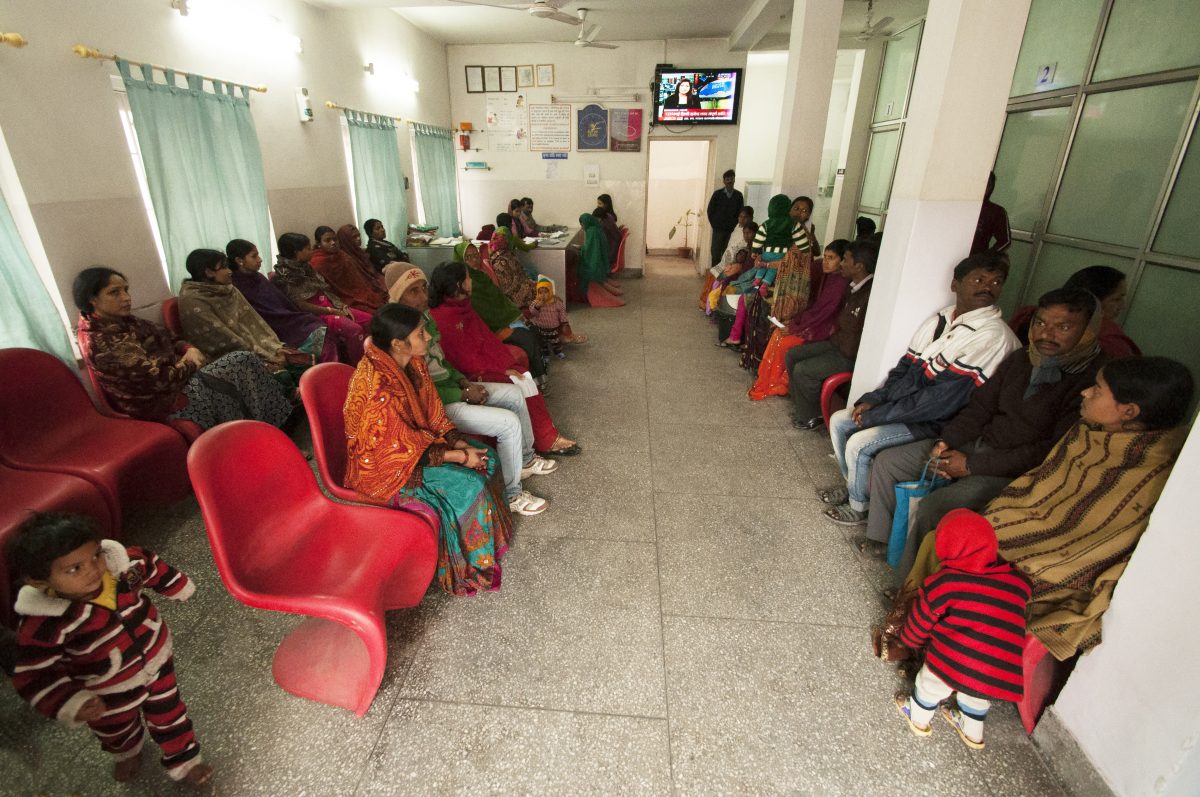
When talking about the state of healthcare in India, accessibility is only one part of the problem. Healthcare must be readily available, yes, but it must also be high-quality. A workforce dogged by shortages of qualified personnel presents a significant challenge to making this a reality.
New research published in BMJ Open shows that India falls short of skilled healthcare workers. Unqualified workers such as so-called ‘quack doctors’ plug the gap in staggering numbers.
To calculate the extent of the issue, the researchers aggregated datasets including “the number of registered practitioners, such as doctors, nurses, physiotherapists, and dentists, [obtained] from published literature and websites of professional councils and organisations” and figures published by the National Sample Survey Organisation (NSSO). The study found significant disparities between these datasets.
Registration data estimates a healthcare workforce to the tune of five million. This may be off by 1.2 million if the NSSO data is considered. That dataset puts the number at 3.8 million.
The registration data, researchers said, suggests a healthcare workforce of 38 workers per every 10,000 people, whereas the NSSO estimated a lower figure of 29 per 10,000 people. In both instances, the World Health Organization (WHO) healthcare workforce density target of 22.8 workers would be met. However, this covers the healthcare workforce in its entirety. When it comes to doctors, nurses, and midwives, the figure is just 20.6 per 10,000 people according to the NSSO (the registration data puts the figure higher at 26.7 for every 10,000 people).
However, these disparities and shortfalls do not represent the study’s most concerning findings.
“25 percent of healthcare workers lack the proper qualifications. Adding to this situation, twenty percent of qualified doctors do not belong to the present healthcare workforce in India. The overwhelming majority of qualified personnel are employed in the private sector. This accounts for more than eighty percent of doctors and seventy percent of nurses and midwives.”

If only properly qualified workers are included in the data, the healthcare workforce drops dramatically. Factoring out informal practitioners such as quack doctors – as well as “traditional birth attendants, faith healers, snakebite curers and bonesetters” – India has just sixteen healthcare workers for every 10,000 people. Such an imbalanced ratio is alarming, as is the sheer volume of unqualified, untrained practitioners operating within India’s health system. Yet this is far from breaking news.
Health Issues India has reported before about India’s legion of quack doctors. As we noted in 2016
That these unlicensed practitioners make up an alarming proportion of India’s workforce in the health sector is highlighted by the BMJ Open data. According to the data, 25 percent of healthcare workers lack the proper qualifications. Adding to this situation, twenty percent of qualified doctors do not belong to the present healthcare workforce in India. The overwhelming majority of qualified personnel are employed in the private sector. This accounts for more than eighty percent of doctors and seventy percent of nurses and midwives.
This results in just one government doctor servicing every 11,082 people in India. The absence of medicos in public hospitals – exacerbated by doctor absenteeism and the absence of specialist doctors across multiple disciplines – entails that many Indians seeking medical treatment may be forced to resort to consulting quack doctors, particularly in rural areas. As the study notes, “unqualified health professionals are usually the first point of contact for rural and poor [populations] in many low-income and middle-income countries.”
Unqualified health workers result in subpar healthcare. According to a study published in The Lancet, India loses around 1.6 million deaths each year to sub-par healthcare. This figure is twice the established number of people who died due to lack of access to healthcare, which is estimated to be around 838,000 people. The data indicates that while access to healthcare is important, quality must be maintained.
“The alternative to quack doctors is to seek treatment in the private sector. However, this recourse carries the very real possibility of incurring catastrophic, impoverishing medical bills. In the space of a single year, out-of-pocket spending pushed 55 million Indians into poverty.”

The urban/rural divide is pronounced when it comes to the health sector in India. Despite rural areas being home to seventy percent of India’s population, just twenty percent of India’s doctors work in these regions. Poorer states are more likely to suffer from staffing shortages. Consequently, as noted by Dr Abhijit Choudhary, “in the dead of night, [quack doctors] are by the side of the people of the village when they are in trouble.”
The alternative to quack doctors is to seek treatment in the private sector. However, this recourse carries the very real possibility of incurring catastrophic, impoverishing medical bills. In the space of a single year, out-of-pocket spending pushed 55 million Indians into poverty.
It is unsurprising then that partly legitimising quack doctors has been proposed to address the shortage of doctors in India. On top of this, training ayurvedic and homoeopathic practitioners and dentists to fill the roles of allopathic doctors have been other similar proposals. In states like Maharashtra, the recruitment and training of ayurvedic and homoeopathic practitioners to practise allopathic medicine has already been implemented.
“Distribution and qualification of health professionals are serious problems in India when compared with the overall size of the health workers,” the researchers assert. Indeed, it is not possible to deliver accessible, high-quality care if staffing levels are not up to scratch to cater to the needs of the whole population.
“Skilled health workforce in India does not meet WHO recommended standards of threshold” – published in the journal, BMJ Open – can be accessed here.

